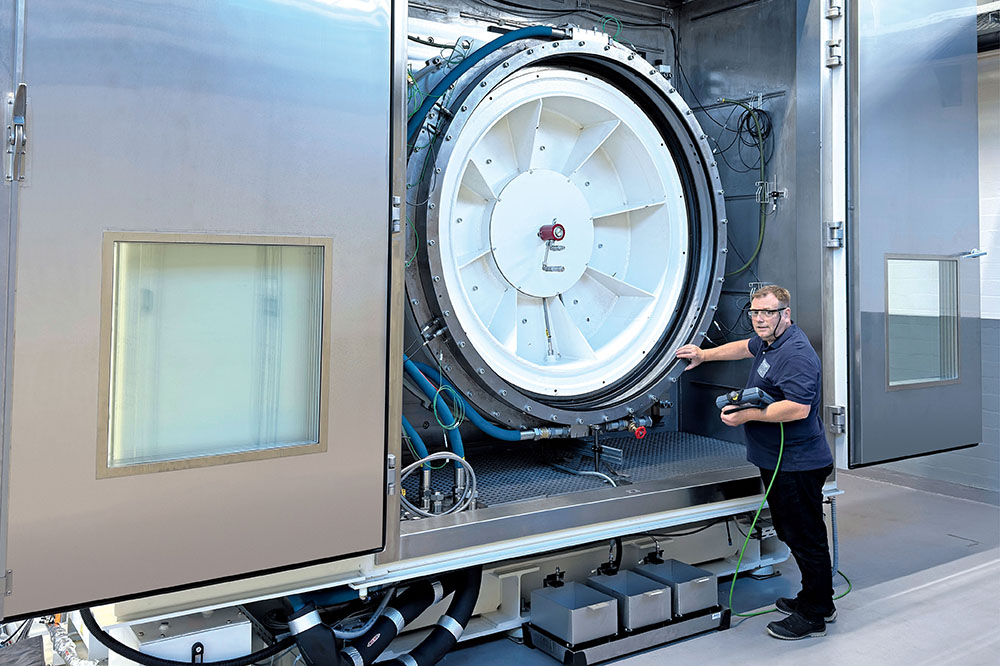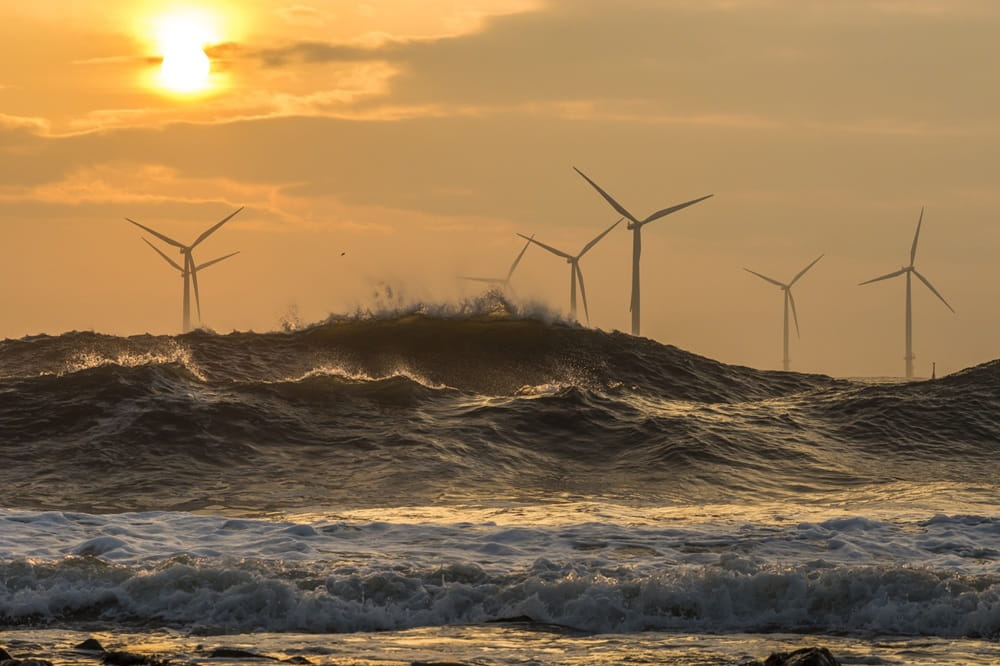Obtain news and background information about sealing technology, get in touch with innovative products – subscribe to the free e-mail newsletter.
16.05.2023 | Story
Energy for the Future
Water. Wind. Sun. The world needs energy. For heat, transportation and manufacturing. Fossil fuels are finite – but renewables offer potential. Who looks ahead at the right moment? Who will be there when innovations break through, and new capabilities unfold? Whether electrolyzers, wind turbines or photovoltaics, we’re looking at tomorrow’s energy.
From wind power and hydrogen to geothermal energy: Why it is important to maintain a healthy curiosity about energy options for the future. An essay by Claus Möhlenkamp, Chief Executive Officer, Freudenberg Sealing Technologies.
Everything needs energy. It starts with the human body. We need a basic metabolic rate to live and an active metabolic rate to work, which in turn helps us nourish our bodies. Back in history, our most important power plant was our body, and nourishment was the source of energy. As we developed new sources of energy, we had the option of increasing its amount (by hunting larger animals), improving efficiency (cooked meat provided more energy), reducing the energy expended for the required activity (by using a plow in the field) or making better use of the land for energy production. Early on, people needed large forest areas to generate heat since wood was the main fuel. To supply a city with energy during the Middle Ages, wooded areas about 100 times the size of the city were needed. Humanity would have inevitably reached its limits had it not switched to coal. As a fuel for steam engines, it replaced oxen and horses as working animals and propulsion for transportation. People could begin to grow their own food on acreage that had been used for animal feed. For centuries, the same sectors represented the greatest demand for energy: heating, transportation and manufacturing.
Powerhouse: With a capacity of 22.5 megawatts, the Three Gorges Dam in China is currently the most powerful power plant in the world. © shutterstock/isabel kendzior
Does that seem far removed from today? Actually, the situation is not that different from what we have been doing since the dawn of the industrial age. We continue to increase the availability of energy: With the rise of the steam engine, coal consumption rose from 10 million tons a year in 1800 to about 800 million tons a century later. About 21 trillion kilowatt hours of electricity are consumed annually around the world. Our hunger for energy seems insatiable. Whenever we have more energy, we develop new technologies that consume more of it – interestingly, even in the sectors that were important over the course of our history. Heating and cooling account for about half of the world’s energy consumption. Transportation is next with about one-third. And then there is the fact that developing countries are continually raising their standard of living – leading to a growing demand for energy.
Now it could be argued that the ability to innovate has consistently made more energy available. Take steam engines, oil exploration and the invention of the battery, for instance – the possibilities multiply with each new technical idea for using or storing energy more efficiently. We can be sure that human ingenuity will continue as a source of new supplies. And yet, we know that we are at a crossroads. We have reached a hard limit with today’s fossil fuels, and it is similar to the one that humanity reached when it relied on wood. There is a need for new forms of energy, new ideas and new approaches to efficiency. In this connection, the word “new” is misleading. As is so often the case with innovations, many of the answers and solutions have long been on the table – in coming years, it will be a matter of implementing and scaling them to size. So, this is the “energy of the future.”
If you want to be around for the future, you have to get there early.
We are already seeing much of that energy. For years, wind power has been setting new records in the size of its turbines and wind farms. The expected boundaries of physics have been continually pushed. Solar energy is on the move after the fulfillment of its promise lagged for years. And we finally see hydrogen being publicly discussed. We will be covering all of these topics in the latest edition of ESSENTIAL.
Primal Force: An earthquake on May 18, 1980, caused the north slope of Mount St. Helens to slide away. As a result the pressure that had built up inside the volcano was released. The massiv eruption had the equivalent to 24 megatons of TNT. © Getty Images/Stocktrek
There is a great deal of potential in hydrogen – as replacement for fossil fuels as well as a multi-purpose storage and transport medium for green energy. Some of the questions remain, but this is precisely the point when technologies become interesting to forward-looking companies and engineers who are driven to be innovative. Freudenberg has been investigating hydrogen for more than 20 years – its time had not yet arrived just then. But such experiences are part of our history of innovation. They have given us a head start in expertise and material competency.
And that’s what it comes down to: If you want to be around for the future, you have to get there early. Not every idea achieves a breakthrough. Will it be tidal or geothermal power plants that make an important contribution as an alternative form of energy? Given our recent experience with the way our reality can rapidly and suddenly change, we should probably be cautious about giving unequivocal answers to the many exciting questions in the energy sector. Instead, let’s maintain an open-minded curiosity about the “energy of the future.” The evolution of energy over the centuries has taught us how fascinating, astonishing and sometimes unexpected innovations have been. This edition of ESSENTIAL wants to do its part, too.
ESSENTIAL – the Magazine
Don’t Miss a Trend
Smart sealing solutions for nearly every sector, technology trends and exclusive interviews – Find them in our company magazine ESSENTIAL with a print subscription and digitally.
More news on the subject Renewable Energies

Join Us!
Experience Freudenberg Sealing Technologies, its products and service offerings in text and videos, network with colleagues and stakeholders, and make valuable business contacts.
Connect on LinkedIn! open_in_new












